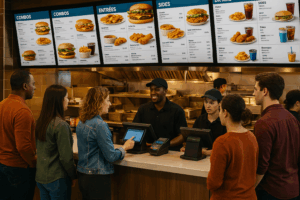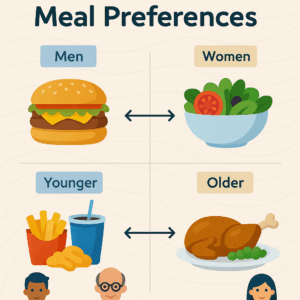- Phone: +1(833)PHX-Geek
- 712 H St NE Suite 1904 Washington, D.C. 20002
Take a look at our camera system. Get remote access to your cameras, and monitor your restaurant while you are away. Great protection for you from theft, employee grift and wrongful lawsuits.
Introduction: Revenue management (RM) is a crucial strategy in the fast food industry, focusing on maximizing revenue through pricing, inventory control, and demand forecasting. This approach goes beyond traditional sales techniques, integrating analytics and customer behavior insights to optimize every aspect of the business.
Fast food chains operate in a highly competitive market where profit margins are often slim. By effectively implementing RM, businesses can strategically price their menu items and manage their supply chain efficiently. Understanding customer preferences and peak dining times allows fast food operators to adjust their offerings and prices dynamically, ensuring they capture the maximum possible revenue. 
Revenue management also involves understanding the psychological aspects of pricing. For instance, bundling items or utilizing promotional pricing can encourage upsells and increase the average transaction value. By keeping a close eye on consumer trends and adapting in real-time, fast food businesses can drive revenue growth sustainably.
A plethora of strategies can be employed to enhance revenue in fast food operations. One of the most effective is menu engineering, which focuses on identifying high-margin items and promoting them prominently. By analyzing sales data, businesses can adjust their menus to feature the most profitable items, encouraging customers to opt for these selections.
Another vital strategy is optimizing the customer experience. Streamlining service processes can lead to shorter wait times, which not only improves customer satisfaction but also increases the overall volume of sales. Training staff to upsell complementary items can further enhance revenue, as satisfied customers are more likely to try additional products.
Additionally, leveraging seasonal promotions and limited-time offers can create urgency and drive traffic during slower periods. By keeping the menu fresh and exciting, fast food operators can entice repeat visits, ultimately contributing to a healthier bottom line.
Technology plays a fundamental role in revenue management, particularly in the fast food sector. Point-of-sale (POS) systems equipped with analytics capabilities can provide invaluable insights into purchasing patterns and consumer behavior. These systems enable operators to make data-driven decisions regarding pricing, promotions, and inventory management.
Mobile apps and online ordering systems further enhance customer convenience, expanding the potential for revenue generation. By offering personalized marketing through these platforms, fast food chains can target promotions more effectively and increase customer loyalty. Additionally, integrating delivery services can tap into a wider market, driving sales beyond traditional dine-in customers.
Emerging technologies, such as AI and machine learning, are also reshaping revenue management in the fast food industry. These tools can forecast demand with remarkable accuracy, allowing operators to optimize staffing and inventory levels proactively. As technology continues to evolve, its potential to enhance revenue management practices will only grow.
 Conclusion: To maximize revenue effectively, fast food operators must understand and track key performance indicators (KPIs). Metrics such as average transaction value, customer acquisition cost, and sales per labor hour are critical for evaluating the success of revenue management strategies.
Conclusion: To maximize revenue effectively, fast food operators must understand and track key performance indicators (KPIs). Metrics such as average transaction value, customer acquisition cost, and sales per labor hour are critical for evaluating the success of revenue management strategies.
Regularly reviewing these KPIs allows businesses to identify areas for improvement and adjust their tactics accordingly. For instance, a decline in average transaction value may signal a need for enhanced upselling techniques or menu adjustments. By analyzing data trends over time, operators can better understand the impact of their revenue management initiatives.
Ultimately, a comprehensive approach to measuring and analyzing performance is vital for sustained revenue growth in the fast food sector. By combining strategic planning with ongoing evaluation, businesses can navigate the competitive landscape effectively and achieve long-term success.